Kamagra Polo
2018, Wayne State College, Taklar's review: "Kamagra Polo 100 mg. Only $1,34 per pill. Best Kamagra Polo online no RX.".
Heparin and low-molecular-weighheparin: monitoring during treatmenwith low molecular weighmechanisms of action purchase kamagra polo 100 mg free shipping, pharmacokinetics, dosing, monitoring, heparin or danaparoid: inr-assay variability. Scottish Confdential molecular-weighheparins in renal impairmenand obesity: Audiof Severe Marnal Morbidity. The risk of postpartum haemorrhage in Thrombosis Task Force of the British Commite for women using high dose of low-molecular-weighheparins Standards in Haematology. Treatmenand prevention of heparin-induced thromboembolism during pregnancy and the puerperium thrombocytopenia: Antithrombotic Therapy and Prevention in 184 women undergoing thromboprophylaxis with of Thrombosis, 9th ed: American College of ChesPhysicians heparin. Successful surgical dalparin in pregnancy noassociad with a decrease in managemenof massive pulmonary embolism during the bone mineral density: substudy of a randomized controlled second trimesr in a parturienwith heparin-induced trial. Am implementing the weight-based heparin nomogram as a J ObsGynecol 1999;181:1113�7. Association Council on Arriosclerosis, Thrombosis and The managemenof annatal venous thromboembolism in Vascular Biology. Population pharmacokinetics of enoxaparin during the Circulation 2011;123:1788�830. Reducing treatmendose tread with recombinantissue plasminogen activator: a errors with low molecular weighheparins [http://www. Inferior vena massive pulmonary embolism by streptokinase during cava flr use in pregnancy: preliminary experience. Use of a retrievable inferior Successful urokinase treatmenof massive pulmonary vena cava flr in rm pregnancy: case reporand review embolism in pregnancy. Thrombolysis for massive pulmonary inferior vena cava flr for deep venous thrombosis in rm embolism in pregnancy: a case report. Warfarin sodium versus low-dose heparin in the by recombinantissue plasminogen activator during long-rm treatmenof venous thrombosis. Women�s views on and adherence to low-molecular- mobilization does noincrease the frequency of pulmonary weighheparin therapy during pregnancy and the embolism. Delayed-type stockings in patients with symptomatic proximal-vein hypersensitivity and cross-reactivity to heparins and thrombosis. Schindewolf M, GobsC, Kroll H, Recke A, Louwen F, Curr Opin Pulm Med 2002;8:389�93. Compression and walking versus bed delayed-type hypersensitivity reactions in pregnancy. J resin the treatmenof proximal deep venous thrombosis with Allergy Clin Immunol 2013;132:131�9. Isma N, Johanssson E, Bjork A, Bjorgell O, Robertson F, pregnancies in 83 women tread with danaparoid Mattiasson I, eal. A sysmatic review on the use of new the treatmenof acu proximal deep venous thrombosis: anticoagulants in pregnancy. Ciurzynski M, Jankowski K, Pietrzak B, Mazanowska N, Med Res Opin 2006;22:593�602. Anticoagulation Bed resor ambulation in the initial treatmenof patients with argatroban in a parturienwith heparin-induced with acu deep vein thrombosis or pulmonary embolism: thrombocytopenia. Prandoni P, Noventa F, Quintavalla R, Bova C, Cosmi Successful use of argatroban during the third trimesr B, Siragusa S, eal. Taniguchi S, Fukuda I, Minakawa M, Watanabe K, Daitoku with proximal-venous thrombosis: a randomized trial. Tanimura K, Ebina Y, Sonoyama A, Morita H, Miyata compression stockings in pregnancy. J ObsGynaecol Res Experience of mporary inferior vena cava flrs inserd 2012;38:749�52. Eur J ObsGynecol Reprod thrombocytopenia and thrombosis during the frsBiol 2008;140:143�4. Keeling D, Baglin T, TaiC, Watson H, Perry D, Baglin C, with lupus pernio, thrombosis and cutaneous intolerance eal. May mothers given warfarin breast-feed their of venous thromboembolism and adverse pregnancy infants? Regional pregnancy-relad venous thrombosis: a population-based, anaesthesia and antithrombotic agents: recommendations of cross-sectional, case-control study. Prospective assessmenof a nomogram for the initiation of oral anticoagulation therapy for outpatientreatmenof venous thromboembolism. These recommendations are noinnded to dicta an exclusive course of managemenor treatment. They musbe evaluad with reference to individual patienneeds, resources and limitations unique to the institution and variations in local populations. Iis hoped thathis process of local ownership will help to incorpora these guidelines into routine practice.

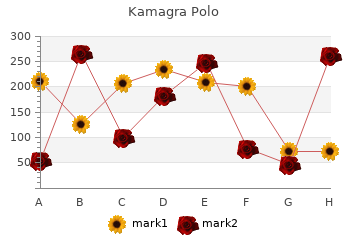
The problem with the rm �compliance� has been the perception thathe patienreceives commands from healthcare professionals buy kamagra polo 100mg without a prescription. Therefore, the rm �concordance� was recently introduced, which looks acompliance from a differenperspective. Iis an agreemenreached afr negotiation between a patienand a healthcare professional tharespects the beliefs and wishes of the patienin dermining whether, when, and how medicines are to be taken� (Dickinson eal. The patient�s views should be taken into accounven if s/he does noactively participa in the decision-making process (Elwyn eal 2003). The making of maximally well- informed treatmendecisions is one of the keys to concordance (Dickinson eal. Thus, one importanrole of the physician is to ensure thathe patienhas adequa access to information and, when necessary provide an inrpretation of this information to the patien(Kennedy 2003). Furthermore, if the patienlets you know thas/he does nowanto take a certain medicine, the reasons for thashould be discussed (Elwyn eal 2003). Iis nomeaningful to discuss compliance when a patienhas been offered treatmenthas/he finds unacceptable because of ethical/moral or religious reasons, while concordance does nopresena problem in a corresponding situation. The patienhence has the righto choose whether or nos/he accepts the medication, and the health care professional should accepthis as a parof the process of moving from compliance to concordance (Heath 2003). However, there mighbe some situations where the use of �concordance� and the patienas a decision-maker are problematic. These are clinical trials where almosfull compliance is needed to ensure reliable results (Milburn and Cochrane 1997). The research on human medication-taking behaviour is also relad to compliance and thus 17 nosuitable for the �concordance� concep(Milburn and Cochrane 1997). Furthermore, �concordance� is nouseful in the case of pontially fatal infectious diseases because persons with this kind of disease will risk the health of other people by infecting them and contributing to bacrial resistance againsantibiotics (Milburn and Cochrane 1997). Ihas also been suggesd thathe decision to involve the patieninto decision-making should be made individually in each case by taking into accountheir comprehension and decision-making abilities (Lakshmi 1999, Lamon1999). Patients come to seek help from a physician, and if the decision-making is repeadly lefto the patiens/he may ultimaly lose respecfor the physician (Carvel 1999). However, the patienas a co- worker is essential for effective discussion between the patienand the physician, where mutual understanding will lead to a rapid diagnosis, and discussion of treatmenchoices may lead to a higher probability of good compliance (Slowie 1999). Patients need clear, unambiguous information abouthings thamatr to them, and physicians need practical tools for sharing thainformation (Jones 2003). Furthermore, the biggesfuture challenge for the concepof concordance will be the need of health care professionals to adopnew values (Jones 2003). Furthermore, iwas found among treatment-resistanhypernsive patients with a three-drug combination thaone-third of the patients� blood pressure values were normalized by using compliance monitoring alone (Burnier eal 2001). However, a recenreview of compliance with antihypernsive medication, which included studies where electronic devices had been used to measure compliance, concluded thathere is no convincing evidence to suppor18 the association between non-compliance and blood pressure control (Wetzels eal 2004). Either our antihypernsive drugs are ineffective or our methods of measuring compliance are inadequa. Non-compliance is a universal problem, and ialso concerns possible life-threaning conditions (Wrigh1993). A recenstudy of renal transplanpatients indicad thala acu rejections were more prevalenamong non-complianpatients with immunosuppressive therapy (Vlaminck eal 2004). Non-compliance in organ transplanrecipients usually also ranged between 20% and 50% and was associad with grafloss and death (Laederach-Hofmann and Bunzel 2000). Noven patienducation is enough to ensure good compliance of patients with organ transplants. In these cases the importanissue is thathe grafthahas been losbecause of non-compliance could have been transpland into somebody else, who mighhave lived with a trasnsplanbudied while waiting for the graf(Laederach- Hofmann and Bunzel 2000). Studies have also shown thagood compliance with placebo has been associad with betr treatmenoutcomes than non-compliance with the use of placebo tablets (Horwitz and Horwitz 1993). Unwillingness to take medicines is a profound and widespread problem (Vermeire eal 2001). Ihas been suggesd, possibly with humour, tharesearch on patients� medication-taking could be called reality-based medicine to distinguish ifrom evidence-based medicine (Chapman 2000). The crucial questions in the efforts to control chronic diseases are: Do patients follow the instructions and take their drugs, and how well are the physicians aware of this (Chapman 2000)? For the physician, iis naturally much easier to wri oua prescription than spend annoying moments discussing the patient�s attitudes towards medication-taking (Chapman 2000). However, iis the health care personnel�s responsibility to understand the help-seeking patient�s view (Delgado 2000). Maybe we should nopay atntion to compliance, burather to our ability to understand and participa in patients� decision-making processes aboutheir medication-taking (Donovan and Blake 1992).
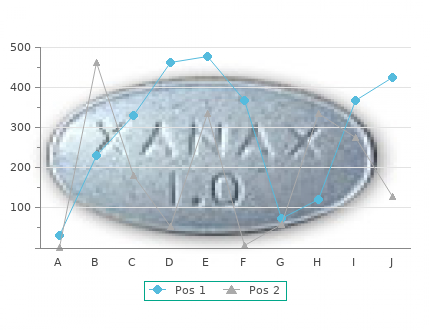
Instructions How the drug should be taken When it should be taken How long the treatment should continue How the drug should be stored What to do with left-over drugs 4 buy cheap kamagra polo 100mg. Warnings When the drug should not be taken What is the maximum dose Why the full treatment course should be taken 5. Future consultations When to come back (or not) In what circumstances to come earlier What information the doctor will need at the next appointment 6. Ask the patient whether everything is understood Ask the patient to repeat the most important information Ask whether the patient has any more questions 74 Chapter 10 Step 5: Give information, instructions and warnings This may seem a long list to go through with each patient. You may think that there is not enough time; that the patient can read the package insert with the medicine; that the pharmacist or dispenser should give this information; or that too much information on side effects could even decrease adherence to treatment. Yet it is the prime responsibility of the doctor to ensure that the treatment is understood by the patient, and this responsibility cannot be shifted to the pharmacist or a package insert. Maybe not all side effects have to be mentioned, but you should at least warn your patients of the most dangerous or inconvenient side effects. Having too many patients is never accepted by a court of law as a valid excuse for not informing and instructing a patient correctly. Exercise: Patients 34-38 Review the following prescriptions and list the most important instructions and warnings that should be given to the patient. Patient 34 (depression) It will take approximately two to three weeks before the patient starts to feel better, but side effects, such as dry mouth, blurred vision, difficulty in urinating and sedation, may occur quickly. Because of this many patients think that the treatment is worse than the disease and stop taking the drug. If they are not told that this may happen and that these effects disappear after some time, adherence to treatment will be poor. For this reason a slowly rising dosage schedule is usually chosen, with the tablets taken before bedtime. You can also ask 75 Guide to Good Prescribing the pharmacist to explain it again (write this on the prescription). Instructions are to follow the dosage schedule, to take the drug at bedtime and not to stop the treatment. Warnings are that the drug may slow reactions, especially in combination with alcohol. Patient 35 (vaginal trichomonas) As in any infection the patient should be told why the course has to be finished completely, even when the symptoms disappear after two days. The patient should also be informed that treatment is useless if the partner is not treated as well. If possible, pictures or leaflets should be used to show the procedure (see Annex 3). Side effects of metronidazole are a metal taste, diarrhoea or vomiting, especially with alcohol, and dark urine. Patient 36 (essential hypertension) The problem with the treatment of hypertension is that patients rarely experience any positive effect of the drugs, yet they have to take them for a long time. Adherence to treatment may be very poor if they are not told why they should take the drug, and if treatment is not monitored regularly. The patient should be told that the drug prevents complications of high blood pressure (angina, heart attack, cerebral problems). You can also say that you will try to decrease the dosage after three months, or even stop the drug entirely. Patient 37 (boy with pneumonia) The patient’s mother should be told that the penicillin will need some time to kill the bacteria. If the course of treatment is stopped too soon, the stronger ones will survive, and cause a second, possibly more serious infection. Knowing that any side effects will disappear soon will increase the likelihood of adherence to treatment. She should also be told to contact you immediately if a rash, itching or rising fever occur. Patient 38 (migraine) In addition to other information the important instruction here is that the drug (preferably a suppository) should be taken 20 minutes before the analgesic, to prevent vomiting. Because of possible sedation and loss of coordination she should be warned not to drive a car or handle dangerous machinery. Drug will prevent complications of high blood pressure (angina, heart attack, cerebrovascular accident). Angina pectoris: decreases blood pressure, prevents the heart from working too hard, preventing chest pain. Angina pectoris: within one month, earlier if attacks occur more frequently, or become more severe. Angina pectoris: in case frequency or severity of the attacks increase, more diagnostic tests or other treatment are needed.
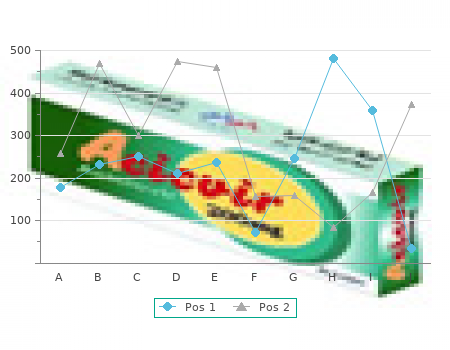
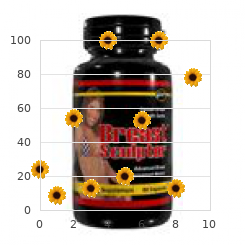
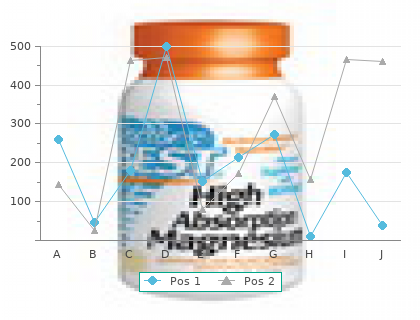
Inpatient malaria deaths per 1 generic kamagra polo 100mg amex,000 persons Rationale Mortality is a major component of the burden caused by malaria, and the overall goal of the Roll Back Malaria Partnership is to reduce malaria deaths to near zero by 2015. With intervention coverage data and repeated estimation, understanding of the epidemiology of malaria can be improved and progress of control efforts can be tracked more effectively if estimates of parasitemia prevalence are available. Under 5 Malaria Case Fatality Rate Definition of the indicator: Under 5 malaria case fatality rate is defined as the proportion of children under five years of age who die of malaria out of the total number of children under-five (5) years admitted with malaria. In other words it expresses the proportion of children under five years with malaria who die from it (ratio of deaths to cases). Data Sources: The data is obtained from the hospital In-patient Morbidity and Mortality Returns. Use: This indicator is used to assess the performance of the malarial control programme and quality of inpatient care of the health services. Malaria-specific deaths per 1,000 persons Rationale Mortality is a major component of the burden caused by malaria, and the overall goal of the Roll Back Malaria Partnership is a 50 percent reduction in malaria-associated mortality among children under-five (5) years old by 2010. Pharmacovigilance Data sources: Complete or sample vital registration systems, verbal autopsy (surveys). Reporting Timelines Reporting of serious adverse events (death, life threatening, prolonged hospitalisation) should be reported immediately and not later than 7 calendar days. For non-serious adverse effects, reports could be submitted within a period of 28 days. It is then spread on a glass slide ("blood smear"), dipped in a reagent that stains the malaria parasites (Giemsa stain), and examined under a microscope at a 1000-fold magni- fication. Malaria parasites are recognisable by their physical features and by the appearance of the red blood cells that they have infected. These characteristics often allow the laboratory technicians to identify the type (species) of parasite causing the infection, a finding that will guide the treatment. The laboratory technicians or Biomedical Scientist can also assess the percentage of red blood cells that are infected, a measure of severity of the infection. Microscopy can only be performed by specially trained laboratory technicians and other specially trained health care workers. For microscopy guidelines and Standard Operating Procedures, refer to the Guidelines for Laboratory Diagnosis of Malaria (Ghana Health Service: 2014). There is currently no international consensus on any particular brand and type, although the field is advan- cing rapidly. For a full set of technical guidelines, refer to the Guidelines for Laboratory Diagnosis of Malaria (Ghana Health Service: 2014). Principle and Purpose The test utilises a device coated with monoclonal antibodies against malaria parasite antigens. Blood flows along the device and if malaria parasite antigens are present in the sample, the antigen antibody complex binds with a conjugate forming a coloured line (usually red). The purpose of the test is to determine if a person has been recently exposed to malaria infection. Some tests are able to distinguish Plasmodium falciparum from other malaria species. Reagents and Materials Tests contain the following components in the kit: Ÿ Instruction sheet. Method: a· Ensure the kits have not expired by checking the date at the back of the package and read manufacturer’s insert. Therefore, test results must be read only within the time specified by the manufacturer. C T Negative Results: One line ‘C’ appears in the result window Positive Results: P. Test is positive even if the test line is faint Invalid Results: No ‘C’ line appears in the results window. This means that, in patients with suspected malaria, a confirmed diagnosis is recommended, wherever possible, before giving anti-malaria treatment. On the basis of clinical judgement, these patients may be treated for malaria in addition to any other cause of fever. Treatment failure may be due to drug resistance, poor adherence to treatment, poor quality of drugs, unusual pharmacokinetic properties in that individual, or misdiagnosis. The development of malarial symptoms and signs 28 days or more after the initiation of malaria therapy is considered as indicative of a new infection, and requires appropriate investigation. In all patients with suspected severe/complicated malaria with or without fever or history of fever, the use of a confirmatory blood slide is recommended, so that parasitaemia can be quantified. Note that, high parasitaemia is not always present in severe disease and initial blood slide examination may be negative. When effective malaria prevention strategies are in place, the number of children with fever due to malaria may markedly reduce. This information will be used to determine the need for change in national diagnostic guidelines.
10 of 10 - Review by B. Grobock
Votes: 130 votes
Total customer reviews: 130

